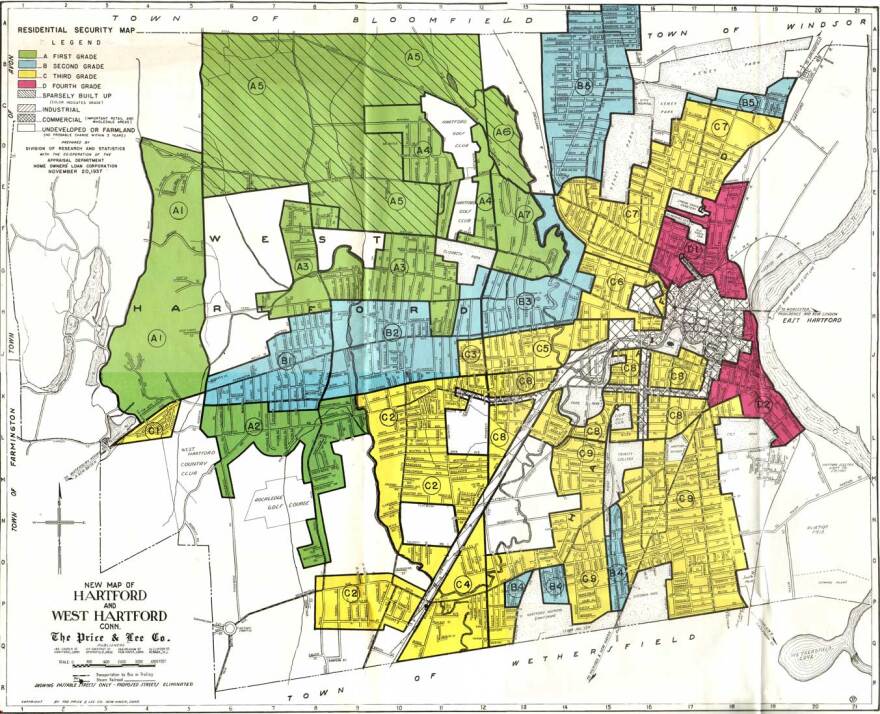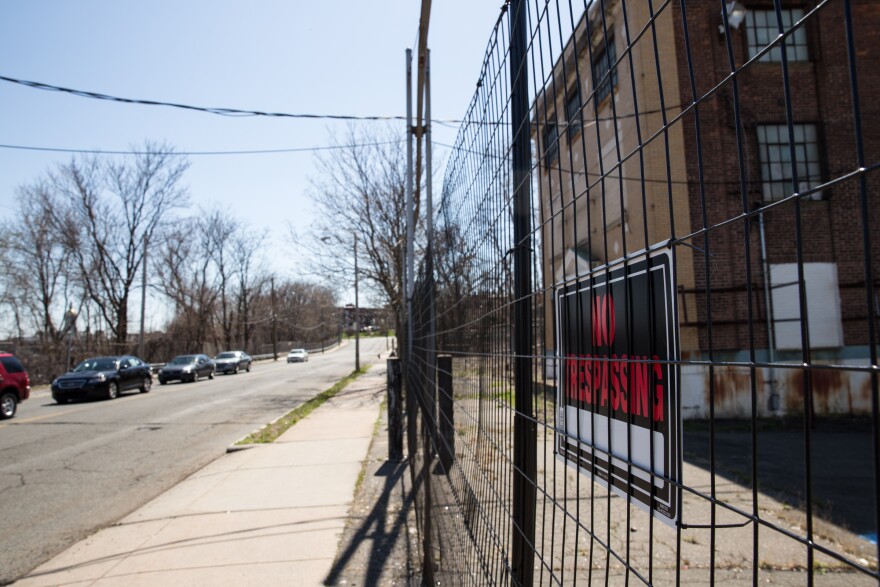In Connecticut's cities and towns, poorly resourced neighborhoods didn’t just happen.
As a small boy, Robert Cotto, Jr. moved with his family to Hartford, where most of his extended family was living in the city’s North End.
His parents were products of the capital city's school system: Annie Fisher and Mary Hooker elementary schools before they became magnet schools, and Hartford High.
As far back as he can remember, Cotto’s parents -- especially his mother -- talked about moving up and out: up from the challenged neighborhoods where they were living, and out into the suburbs.
Cotto is Trinity College’s director of Urban Educational Initiatives, and an elected member of the Hartford Board of Education. He knows more than most that in Hartford and other Connecticut towns – New London, New Haven – poorly resourced neighborhoods (the kind his parents wanted to escape) didn’t just happen.
The disinvestment and resulting decay of struggling neighborhoods were codified by no less an entity than the federal government.
Nearly 100 years ago, the federal government started a process that came to be called redlining, which set in motion policies that cut off funding and resources for neighborhoods, many of which still struggle today.
An alligator-filled moat couldn't have been more effective in cutting off the neighborhoods.


Redlining took money away that might have made a difference to neighborhoods, even today.
During the Depression, banks were reluctant to write mortgages, which at the time required would-be homeowners to put down as much as half the house’s price, and then pay as much as eight percent in interest rates.
There were no 30-year mortgages. Loans were due within three to seven years, and if the mortgage wasn’t paid off, homeowners often had to take out second mortgages with prohibitive rates.
To encourage home ownership among the middle class, the National Housing Act of 1934 established the Federal Housing Administration to provide mortgage insurance to lenders.
The FHA wielded massive influence on home ownership, along with the Home Owners Loan Corporation, a federal program that evaluated neighborhoods for loan viability. To make sure the government didn’t back risky mortgages, surveyors – mostly people who worked in banking and real estate – assessed residential neighborhoods to record their upkeep, and to make note of who lived there. Neighborhoods with high scores were considered better bets for mortgages.
In Hartford and elsewhere, neighborhoods were color-coded and graded.
Grade D was the least desirable -- and recreated on maps in red. The bulk of downtown Hartford was red.
The majority of the North End, and Frog Hollow and the South End, were ranked Grade C – one notch above least desirable, which was colored yellow on the maps.
Though some researchers say the rankings merely reflected the reality of neighborhoods at the time, a poor ranking created a pattern, later known as redlining, that removed from neighborhoods money that might have made a difference, even today.
For Cotto’s old neighborhood in the North End, a long-ago surveyor wrote that the neighborhood was centrally located (a plus), but that the buildings were old, and there were too many apartments and rooming houses to make the area viable for lenders.
Cotto finished college at Dartmouth, and then did post-graduate work at Harvard University. When he returned to Hartford, he found an apartment in Frog Hollow, an economically challenged neighborhood that in 1937 the HOLC called “very old and congested,” and suggested that “lenders exercise utmost caution” before writing loans.
The HOLC maps were not meant to be circulated, but around the country, researchers have been unearthing them because they go a long way toward explaining why some neighborhoods don’t thrive. In Connecticut, those maps include neighborhoods in New Haven, Darien, New Canaan, Stamford, and Hartford.

“For people who think that we’re trying to re-litigate the past or trying to use things of the past to explain issues now, the point is that stuff has a real impact on people’s lives,” said Jeff Gentes, managing attorney of the Fair Lending and Foreclosure Prevention Project at the Connecticut Fair Housing Center, which provides aid for people who believe they’ve been victims of housing discrimination.
“If African Americans weren’t allowed to live in or buy houses in certain neighborhoods, while whites were given subsidized loans, that still matters today,” Gentes said.
Jack Dougherty, Trinity College professor of educational studies, has been working with other collaborators on an online book called On The Line: How Schooling, Housing, and Civil Rights Shaped Hartford and Its Suburbs. The book is a go-to resource for any one who wants to learn about housing and schools, the growth of Connecticut, and how public policies often had wrote in stone a neighborhood's bleak future.
When one unfair policy would end, others would be written or practiced to keep areas from thriving.

“When people ask me what’s really happening over time, these overt racial barriers that are coded into federal lending policies or property deeds, those diminish over time,” said Dougherty. “They get replaced by more subtle racial barriers, such as the racial steering charges in the '70s.”
The pattern had been set, and an understanding of that might make today’s conversation about education and cities more fruitful, said Cotto.
Cotto's family was eventually able to buy a small ranch house in the southeastern part of Manchester. He remembers being one of only a few Puerto Rican students in his elementary school, Bowers, and the only African American students at his school came from Hartford as a participant in a school choice program.

(Things have changed. Today, according to the latest statistics available from the state Department of Education, roughly 27 percent of Bowers’ students are Hispanic, and 14 percent are African American.)
“People are looking at places in the North End, or they’re looking at places in Frog Hollow and they’re saying ‘These are tenements, these are 'under-performing’ schools,' or whatever negativity they want to say about the schools or the housing, but they’re not realizing this was organized that way,” said Cotto, who now lives in Hartford's South End with his wife. “It’s not just the people who live there decided to create bad schools or build crumbling houses, or to ignore it. This was organized in a way that investment would not flow to those areas as they did to other areas.”
The Connecticut Fair Housing Center will honor Lisa Belkin, author of Show Me a Hero, a 1999 book that was recently adapted as an HBO mini-series, at their annual Loving Civil Rights Award on April 21 at the Bond Ballroom in Hartford. Prior to the event, the center will host a community conversation at 3:30 pm at Hilton Homewood Suites at 338 Asylum Street in Hartford (the same building that houses the Bond Ballroom).






